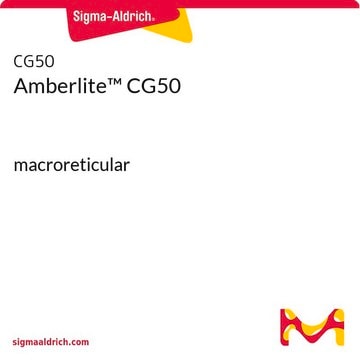47614
Fluram
BioReagent, suitable for fluorescence, ≥99.0% (UV)
Synonym(e):
Fluorescamin, 4-Phenylspiro-[furan-2(3H),1-phthalan]-3,3′-dion
About This Item
Empfohlene Produkte
Produktlinie
BioReagent
Assay
≥99.0% (UV)
mp (Schmelzpunkt)
153-157 °C (lit.)
153-157 °C
Löslichkeit
acetonitrile: soluble
ethanol: soluble
Fluoreszenz
λex 234 nm
λex 390 nm; λem 480 nm in 0.5 M borate pH 8.5 (after derivatization with L-leucine)
Eignung
suitable for fluorescence
SMILES String
O=C1OC2(OC=C(C2=O)c3ccccc3)c4ccccc14
InChI
1S/C17H10O4/c18-15-13(11-6-2-1-3-7-11)10-20-17(15)14-9-5-4-8-12(14)16(19)21-17/h1-10H
InChIKey
ZFKJVJIDPQDDFY-UHFFFAOYSA-N
Suchen Sie nach ähnlichen Produkten? Aufrufen Leitfaden zum Produktvergleich
Anwendung
Verpackung
Rechtliche Hinweise
Lagerklassenschlüssel
13 - Non Combustible Solids
WGK
WGK 3
Flammpunkt (°F)
Not applicable
Flammpunkt (°C)
Not applicable
Persönliche Schutzausrüstung
Eyeshields, Gloves, type N95 (US)
Analysenzertifikate (COA)
Suchen Sie nach Analysenzertifikate (COA), indem Sie die Lot-/Chargennummer des Produkts eingeben. Lot- und Chargennummern sind auf dem Produktetikett hinter den Wörtern ‘Lot’ oder ‘Batch’ (Lot oder Charge) zu finden.
Besitzen Sie dieses Produkt bereits?
In der Dokumentenbibliothek finden Sie die Dokumentation zu den Produkten, die Sie kürzlich erworben haben.
Unser Team von Wissenschaftlern verfügt über Erfahrung in allen Forschungsbereichen einschließlich Life Science, Materialwissenschaften, chemischer Synthese, Chromatographie, Analytik und vielen mehr..
Setzen Sie sich mit dem technischen Dienst in Verbindung.








